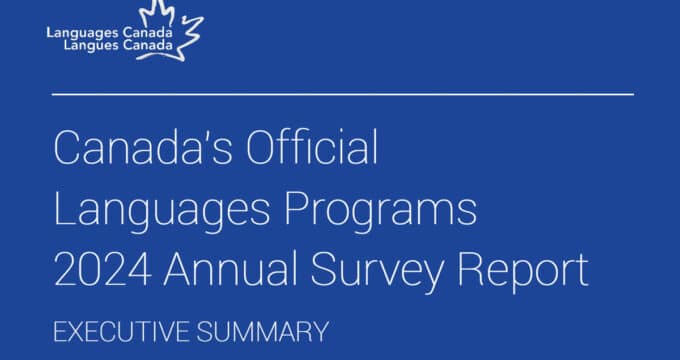More US universities establishing joint venture pathways
It appears that a greater number of American universities are establishing pathway programmes for international students in collaboration with private partners. While more common in other markets, the joint venture pathway model has not been widely used in the US in the past. However, as more American colleges look to expand their internationalisation efforts, the business case for pathway partners has become both more compelling and more widely accepted. A variety of private companies carry out recruitment activities across the world to seek students and quality screen them, and point them to Western institutions. The thing that distinguishes a pathway partner from other international recruiting channels, such as international agents, is that the pathway partner is directly involved in delivering preparatory programmes for international students on the campus of the institutional partner. Such programmes differ in their duration, structure, and revenue-sharing arrangements and American universities work with a number of pathway providers, including INTO University Partnerships, Kaplan, Inc., Study Group, and Navitas. These joint ventures prepare foreign students to progress to the university’s academic programmes after completing a preparatory programme, usually combining English language and introductory academic courses, provided by the pathway partner.
The expansion of pathway programmes in the US reflects a growing emphasis on internationalisation and international recruitment on the part of American universities. It reflects as well a growing willingness to partner with the private sector for the sake of greater recruitment capacity and/or expertise in preparatory programmes and international student services.
Speaking to The New York Times, Sabah U Randhawa, the provost Oregon State University, an INTO partner, says it is “absolutely critical for folks to know different cultures and understand the world” and believes this is “more important in the long haul than any discipline they learn.” In addition to these educational or cross-cultural goals, revenue from overseas students is also a welcome boost to US institutions in a period when support from the state for higher education is at a historical low, along with the decline of research grants, and the stagnant supply of college-age Americans. Mr Randhawa supports this point on overseas revenue, as he explains to The Times, because “it helps us afford to admit more resident students, offer them more aid, expand the faculty and infrastructure.” INTO Oregon State has about 1,400 students primarily from China, many of whom are studying engineering, but Mr Randhawa expresses his desire to increase this number substantially, “because we want more academic and national diversity.” The Times reports that at least 15 US universities work with private-sector pathway providers today and there are indications of growing interest among American institutions in this type of partnership model. George Mason University initially turned down a potential collaboration with a private-sector partner, deciding instead to develop their own foundation programme for international students. The univeristy built and launched its programme but has not yet seen it grow to a sufficient scale. That drive for growth led George Mason to revisit the question of a joint venture with a pathway provider and it announced earlier this year a new pathway venture with INTO. Speaking to Inside Higher Ed, Peter N Stearns, the university’s provost says, “having built a successful transition programme here we also realise that we face some clear limitations in expanding it to the scale we would like in meeting the university’s goals for internationalisation.” Mr Stearns highlights as well that the university doesn’t have the financial resources to match the private-sector partner’s recruiting network. Ángel Cabrera, the president of George Mason University, said recently the partnership “will help increase the university’s enrolment and boost global education for all of our students, both of which are important strategic objectives.” While such partnerships in the US are expanding and bring in recruitment resources and new buildings, they have also raised concerns for some with respect to academic quality and the appropriateness of outsourcing intensive English programmes. For example, Carter A Winkle an assistant professor in curriculum and instruction at Barry University, told Inside Higher Ed he believes that universities have their own people who can initiate and sustain such programmes without any external help. Mr Winkle added that if universities require a private-sector partner, then this should be for recruitment, not for help in developing student services and academic programmes.
SEVP review of conditional admissions and bridging programmes still underway
Conditional admissions are an important aspect of pathway programmes in that students are admitted to the pathway programme and often also conditionally admitted to the partner institution at the same time (with the condition that they successfully complete their pathway studies). So needless to say, pathway providers - and their institutional partners - are among the many keen observers of the current policy review for bridge programmes and conditional admissions underway with US Immigration’s Student and Exchange Visitor Program (SEVP). A previous ICEF Monitor post provides details of proposed changes to conditional admissions (where an I-20 form [a Certificate of Eligibility for Nonimmigrant Student Status] is issued by a school to a student who does not meet all the standards of admission) and bridge programmes (these intend to bridge the gap between a student’s proficiency gaps and qualification for a full degree programme). The expansion of pathway programmes, therefore, may be affected by SEVP whose final guidance on these two policy areas is still under review and may not come for a few months. Could this pending US immigration policy decision materially affect such programmes going forward? In a previous ICEF Monitor feature interview, Kathryn Kohut, executive director of English USA, states that both educators and agents are waiting for the final outcome of the policy review and hope that in light of all the comment time given, it will be “well thought out, researched, and clear.”


















